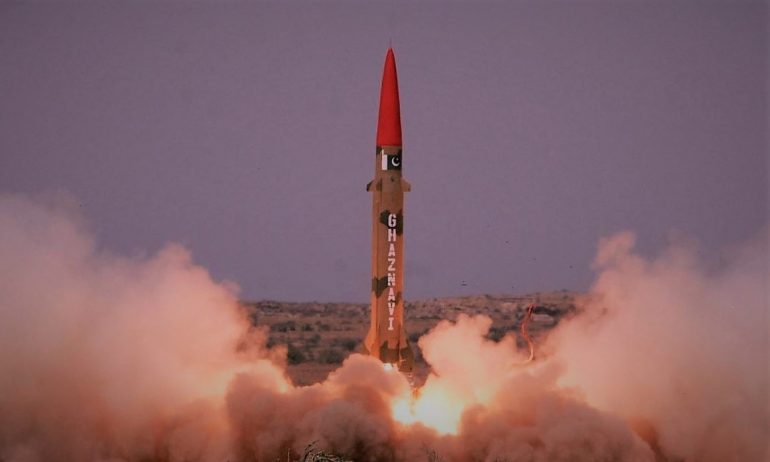Pakistan Army conducted a successful launch of a surface-to-surface Nuclear-Capable Ballistic missile named Ghaznavi on Thursday (12 August).
According to a statement provided by ISPR (Inter-Services Public Relations), The training launch of the Ghaznavi missile was meant to verify ASFC (Army Strategic Forces Command) operational preparedness and re-validate the weapon’s system technical parameters.
Ghaznavi or Hatf-III is named after Mahmud of Ghazni, an 11th-century Turk Muslim conqueror, and the term Hatf meaning “death” or “vengeance” in Arabic. The missile Ghaznavi, according to the military’s media wing, can deliver different types of warheads up to a range of 290 kilometers.
The launch of the ballistic missiles was seen by Lt Gen Muhammad Ali, Commander Army Strategic Forces Command; senior officials from Army Strategic Forces Command’s Strategic Plans Division; and scientists and engineers from strategic organizations.
Lt Gen Muhammad Ali valued the high level of training, weapon system handling, and troop execution of the launch mission in the field.
The president, prime minister, chairman of the Joint Chiefs of Staff Committee, and service chiefs all thanked the ASFC, scientists, and engineers on a successful launch.
A training launch of Ghaznavi was conducted by the ASFC in February 2021 as part of a field training exercise. According to a statement issued by ISPR, the missile is fully equipped with a terminal navigation system. Several training launches have been conducted by the ASFC in recent years with the intention of checking the working and handling of the complex weapon system.
The Ghaznavi missile has been tested in the modes of day and night. The successful testing in both modes indicates Army’s reliance on the Nuclear-Capable missile. If the missile is launched from central Punjab, then it can reach multiple cantonments of India and military bases located in border areas.



